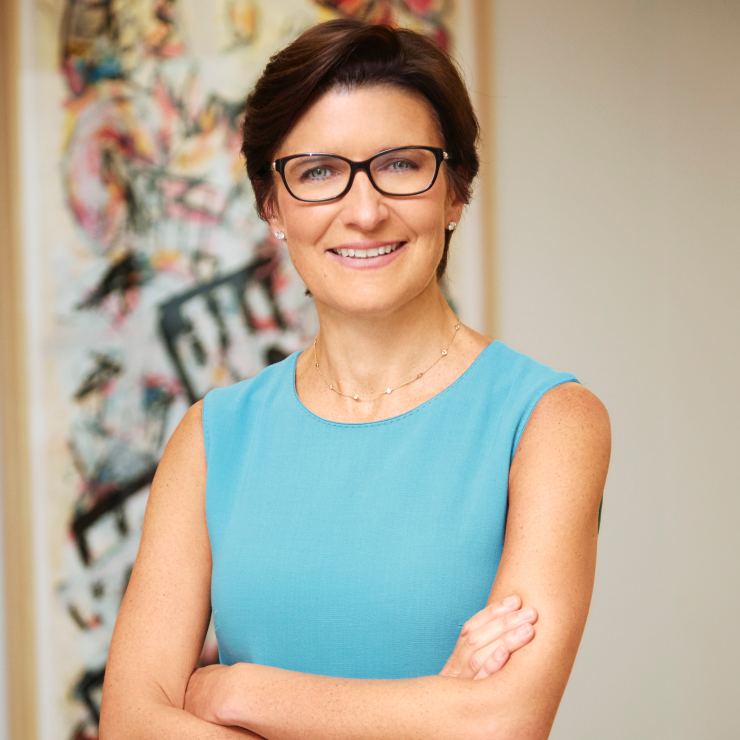On the day that Jane Fraser made history as
The Scottish-born banker has plenty of work to do when she succeeds
But some of those challenges might turn into opportunities for the longtime Citi executive, said retired KeyCorp Chairman and CEO Beth Mooney, who in 2010 became the first female CEO of a top 20 bank.
“There’s a notion that it’s a bit of a new day in a new world,” said Mooney, who does not know Fraser personally. “I can see how she will have the opportunity to really shape things that will last for years, and that could be the logic in terms of this transition. … Her experience [at Citi] and time in the consumer bank will make her a terrific leader for that company.”

In a memo to employees Thursday, Fraser acknowledged the work that lies ahead in crafting the company’s next chapter. She said Citi must position itself “for the digital and disruptive times ahead and for consistent, sustainable performance and long-term success.”
“Most notably we need to invest in and enhance our infrastructure for a fully digital world; we need to move from remediating to fundamentally transforming our risk and control environment; and we need to ensure that we have a culture which demands excellence in these areas because it will ultimately make us more competitive and improve our ability to serve our customers and clients,” she wrote. “I am excited for the bank we are building.”

Fraser, 53, has built — and cleaned up — several operations since she joined Citi’s corporate and investment banking division in 2004. A former partner at McKinsey & Co., where she advised financial firms, she was Citi’s global head of strategy and mergers and acquisitions from 2007 to 2009 and then spent the next four years as CEO of Citi’s private bank. In 2013, she was named CEO of U.S. consumer and commercial banking and CitiMortgage and, two years later, ascended to CEO of Citi’s Latin American region, where she oversaw Citi’s strategy and financial results across 23 countries including Mexico. The job included a multiyear restructuring, a major transformation in controls and ethics and
Last fall, she became
At one point, nearly 90% of the bank’s workforce was working remotely.
Citi’s performance so far during the pandemic has been relatively stable. The company
But the company’s returns have lagged those of other large banks, and that remains the case during the pandemic. Citi reported a return on equity of 2.4% in the second quarter, trailing JPMorgan Chase’s 7% and Bank of America’s 5.44%. U.S. Bancorp’s ROE was 5.3% in the quarter. Wells Fargo, which reported a large quarterly loss as it deals with the pandemic and aftermath of its fake-accounts scandal, had a negative ROE in the second quarter.
In an interview, Wells Fargo Securities analyst Mike Mayo said Fraser’s appointment represents “a groundbreaking moment” for an industry that’s still largely white and male. But, he said, “the jury is out” when it comes to shareholders because Fraser is unknown to a lot of investors.
“It's a little bit of an unknown entity despite a very impressive" resume, he said.
In a research note Thursday, Mayo reiterated a longtime concern that Citi’s shares are trading at only around 70% of the company's tangible book value, which is considered subpar.
Citi shares closed Thursday at $50.95, down 0.88% on a day when the Dow Jones Industrial Average fell 1.45%.
That Citi’s next CEO will be a woman is not a complete surprise, given the recent focus and transparency on gender pay gaps at the company. In 2019, Citi became the first U.S. banking company to disclose adjusted and unadjusted pay-gap figures for women and underrepresented groups.
Fraser herself is a vocal advocate for gender equality. Last year, she was named co-chair of the Citi Women Affinity group, a role in which she is now responsible for global diversity and inclusion initiatives to ensure that Citi is recruiting, promoting and retaining more women.
Lorraine Hariton is president and CEO of Catalyst Inc., which advances women in the workplace. She said Citi still has work to do, but Fraser’s appointment “speaks to [Citi's] intentionality” in building pipelines and grooming women to move into high-ranking jobs.
Ellen Alemany, chairman and CEO of CIT Group in New York, the 39th-largest U.S. bank, with $56.7 billion in assets, praised Fraser’s promotion.
“This is a very positive step forward for banking,” Alemany said in an email.
Julieann Thurlow, president and CEO of the $639 million-asset Reading Cooperative Bank in Massachusetts, said she hopes the move “is a real shift in thinking at the board level that diversity, equity and inclusion is good for business.”
Fitch Ratings analysts Christopher Wolfe and Mark Narron said in a statement that the move “demonstrates solid succession planning and the company’s bench strength.”
“Fitch views Fraser’s record at Citi favorably along with her deep institutional knowledge, having led key businesses and segments within the company,” Wolfe and Narron said.
Ultimately, investors are looking for better organic growth and higher returns, according to Brian Kleinhanzl, an analyst at Keefe, Bruyette & Woods who follows Citi.
“And that’s the No. 1 question that Jane will have to answer: How do you get there?” he said.
Kevin Wack, Paul Davis, Laura Alix and Jon Prior contributed to this story.





